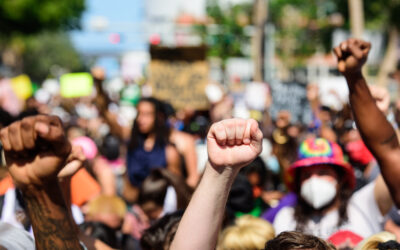Labor strikes have long been a powerful tool for workers to assert their rights and negotiate better working conditions. However, when a strike occurs, companies must find a way to keep their operations running while they work towards resolving the dispute. This is where strike staffing agencies come into play. These specialized staffing firms provide temporary replacement workers to keep businesses operational during labor disputes. In this article, we will delve into the strategy and planning of a strike staffing agency, examining how they prepare for and manage labor strikes while ensuring the continuity of business operations.
Understanding the Landscape of Labor Strikes
Before diving into the strategies employed by strike staffing agencies, it is essential to understand the landscape of labor strikes. According to the Bureau of Labor Statistics, there were 25 major work stoppages in 2019, involving 425,500 workers and resulting in 3.2 million days of idleness. Although these numbers are lower than the peak years of labor strikes in the 1970s and 1980s, they still represent significant disruptions to businesses and industries.
A labor strike can be initiated for various reasons, including wage disputes, working conditions, benefits, and job security. Regardless of the cause, the consequences of a strike can be severe for both workers and employers, leading to lost wages, decreased productivity, and reputational damage. Consequently, strike staffing agencies must be well-prepared to navigate the complex dynamics of labor disputes and provide effective solutions for their clients.
The Cost of a Labor Strike
The cost of a labor strike to a company can vary significantly depending on the industry, size of the company, duration of the strike, and other factors. While it is difficult to provide specific numbers that apply universally, several studies and examples can help illustrate the potential financial impact of a labor strike on a company.
A study conducted by the U.S. Federal Mediation and Conciliation Service found that in the 1980s, the average cost of a strike to a company was approximately $1 million per day (in 1980s dollars). Adjusted for inflation, this would be equivalent to roughly $2.5 million per day today. However, it’s important to note that this figure could be much higher or lower depending on the specific circumstances of the strike.
In 2019, the United Automobile Workers (UAW) strike against General Motors (GM) lasted for 40 days and involved around 46,000 workers. According to GM, the strike cost the company nearly $3 billion in lost production, which translates to an average daily loss of approximately $75 million.
The West Coast port slowdown in 2014-2015, which resulted from a labor dispute between the International Longshore and Warehouse Union (ILWU) and the Pacific Maritime Association (PMA), had a significant impact on the U.S. economy. According to a study by the National Association of Manufacturers (NAM) and the National Retail Federation (NRF), the port slowdown cost the U.S. economy up to $2.5 billion per day at its peak.
The 2007 Writers Guild of America (WGA) strike lasted for 100 days and affected the film and television industry. According to various estimates, the strike cost the Los Angeles economy between $1.5 and $2.1 billion, with the entertainment industry alone losing around $380 million in wages.
These examples demonstrate that the cost of a labor strike to a company can be substantial, with the potential to reach millions or even billions of dollars in lost revenue, wages, and productivity. The actual cost of a strike will vary depending on numerous factors, but it is clear that labor disputes can have significant financial repercussions for both companies and the broader economy.
Hollywood strikes: New labor deals could cost media companies up to $600M a year, says Moody’s
Identifying Potential Strike Scenarios
One of the key aspects of a strike staffing agency’s strategy is identifying potential strike scenarios well in advance. By monitoring industry trends, labor relations news, and collective bargaining agreements, these agencies can anticipate which sectors or companies may be at risk for labor disputes.
Once a potential strike scenario has been identified, the agency works closely with the client to develop a contingency plan. This plan outlines the staffing requirements, operational adjustments, and communication strategies that will be implemented during a strike.
Recruiting and Training Replacement Workers
A critical component of a strike staffing agency’s strategy is recruiting and training a pool of qualified replacement workers. These individuals must possess the necessary skills and experience to perform the tasks of striking workers, ensuring minimal disruption to the company’s operations.
To build a robust roster of replacement workers, strike staffing agencies use various recruitment methods, such as targeted advertising, job fairs, and referrals. They also conduct thorough background checks and interviews to ensure that candidates are reliable and capable of handling the unique challenges of working during a labor dispute.
Once recruited, replacement workers undergo specialized training to familiarize themselves with the company’s operations, safety procedures, and specific job requirements. This training may be conducted on-site or at the strike staffing agency’s facilities, depending on the client’s preferences and the nature of the work.
Coordinating Strike Logistics
In addition to providing replacement workers, strike staffing agencies also play a crucial role in coordinating the logistics of a labor strike. This includes arranging transportation and accommodations for replacement workers and securing any necessary permits or licenses for picket line activities.
Furthermore, strike staffing agencies often coordinate with local law enforcement and private security firms to ensure the safety of replacement workers, clients, and striking employees. This may involve developing security plans, monitoring picket line activities, and addressing any incidents or confrontations that may arise during the strike.
Managing Communications and Public Relations
Effective communication is essential in managing the fallout from a labor strike. Strike staffing agencies often work with their clients to develop and implement communication strategies that maintain transparency and minimize reputational damage.
This may include drafting press releases, coordinating media interviews, and managing social media accounts to ensure that the company’s perspective is accurately represented. Additionally, strike staffing agencies may guide communicating with employees, customers, and other stakeholders to maintain positive relationships and minimize the strike’s impact on the company’s reputation.
Evaluating Strike Outcomes and Lessons Learned
Once a labor strike has been resolved, strike staffing agencies collaborate with their clients to evaluate the outcomes and identify any lessons learned. This may involve conducting debriefing sessions with replacement workers, reviewing operational data, and assessing the effectiveness of communication strategies.
By analyzing the successes and challenges of each strike, staffing agencies can continuously refine their approach and improve their ability to manage future labor disputes.
Maintaining Business Continuity
Strike staffing agencies are critical in helping companies navigate the complexities of labor strikes and maintain business continuity. By identifying potential strike scenarios, recruiting, and training replacement workers, coordinating logistics, and managing communications, these specialized firms provide valuable support to businesses during one of their most challenging periods. As the landscape of labor relations continues to evolve, strike staffing agencies’ expertise and strategic planning will remain essential in mitigating the impact of labor disputes on companies and industries.









